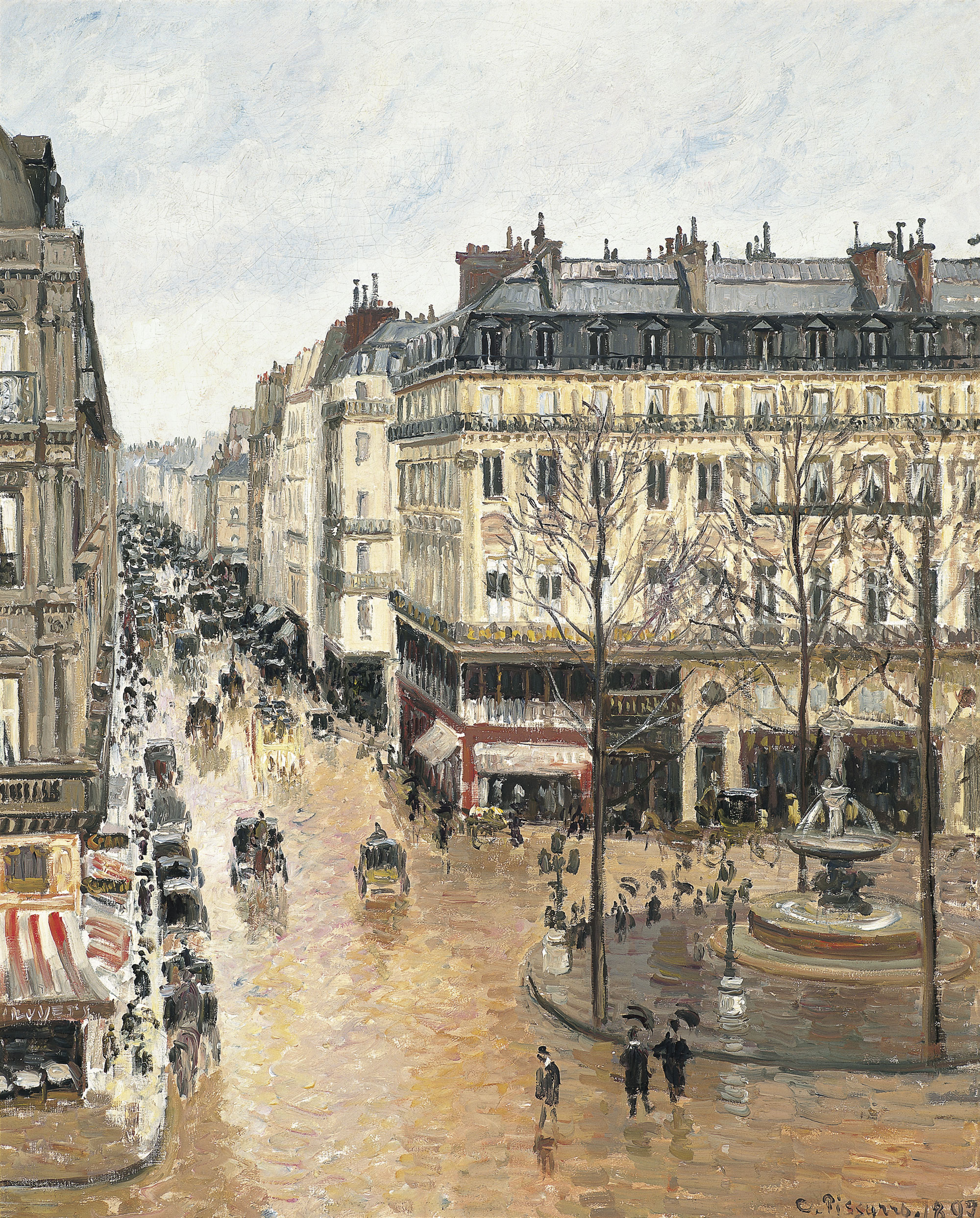A Legislative Fix for the Cassirer Case?
April 17, 2024

Camille Pissarro, Rue Saint-Honoré,
dans l’après-midi. Effet de pluie.
Regular TLB readers may be familiar with the Cassirer case seeking to recover a painting by Camille Pissarro that was stolen by the Nazis and is now in the possession of a Spanish museum. The U.S. Supreme Court held in Cassirer v. Thyssen-Bornemisza Collection Foundation (2022) that federal courts must apply state choice-of-law rules to determine the governing law in cases under the Foreign Sovereign Immunities Act (FSIA). On remand, the Ninth Circuit determined that, under California’s choice-of-law rules, Spanish law governs ownership of the painting.
Under Spanish law on acquisitive prescription, a person who possesses moveable goods acquires title after three years of uninterrupted possession in good faith and after six years of uninterrupted possession even in bad faith. Under California law, by contrast, thieves cannot pass good title, which means that the museum could never have acquired title to the painting. A petition for rehearing is pending.
On March 28, California Assemblyman Jesse Gabriel introduced legislation directing courts to apply California law in actions by California residents involving stolen works of art. The legislation would expressly apply to pending suits up until the point at which the U.S. Supreme Court denies cert.
In California, as in most U.S. states, choice-of-law rules are rules of state common law. But courts are required to follow any direction by the legislature with respect to choice of law. Section 6(1) of the Restatement (Second) of Conflicts provides that “[a] court, subject to constitutional restrictions, will follow a statutory directive of its own state on choice of law,” and California courts have done this with respect to other statutory directives. If passed, the proposed legislation would require the Ninth Circuit to rehear the case, reverse its decision, and apply California law, which would give the painting to the heirs of Lilly Neubauer, from whom the Nazis stole it.
A Few Things to Remember
If this strikes some readers as inappropriate legislative intervention in a pending case, it is important to bear several points in mind. First, the U.S. Supreme Court unanimously held that state law governs the choice-of-law question in this case. Not wanting to get the answer wrong, the Ninth Circuit asked the California Supreme Court to decide the question but the California court declined to do so.
Second, California’s executive branch has taken the position that California law applies to this case even under California’s existing choice-of-law rules. Before the Ninth Circuit, California’s Attorney General arguedthat under California’s comparative impairment approach, California law applies because California’s interests would be harmed more than Spain’s by the non-application of its law.
Third, there is no constitutional prohibition against the retroactive application of new laws in civil cases. The Ex Post Facto Clause of the U.S. Constitution is limited to criminal cases. When a state legislature specifies that a new law applies to pending cases, courts must generally follow its direction.
Fourth, the Spanish law that the Ninth Circuit applied in this case is an outlier. As Carlos Vázquez pointed out in a post for TLB, “Spain’s law of acquisitive prescription is unusually friendly to possessors of stolen property.” Common law jurisdictions generally do not permit acquisitive prescription of moveable property at all. They protect possessors through statutes of limitations, but such statutes begin to run only when the owner acquires actual knowledge of the stolen property’s location.
Finally, the proposed legislation directs the application of California law in all cases involving stolen art, not just art works stolen during the Holocaust. Thus, contrary to the museum’s argument in its response to the petition for rehearing, the proposed law would not be unconstitutional. It is not like the Holocaust-specific extension to California’s statute of limitations that the Ninth Circuit previously struck down, but rather like the more general extension of the statute of limitations that the Ninth Circuit later upheld.
Conclusion
The choice-of-law question in this case is governed by state law. The California Supreme Court declined to answer the question. The California Attorney General expressed its view, but the Ninth Circuit disagreed. The California Legislature could answer the question definitively. But to help the plaintiffs in Cassirer, it will have to act soon.